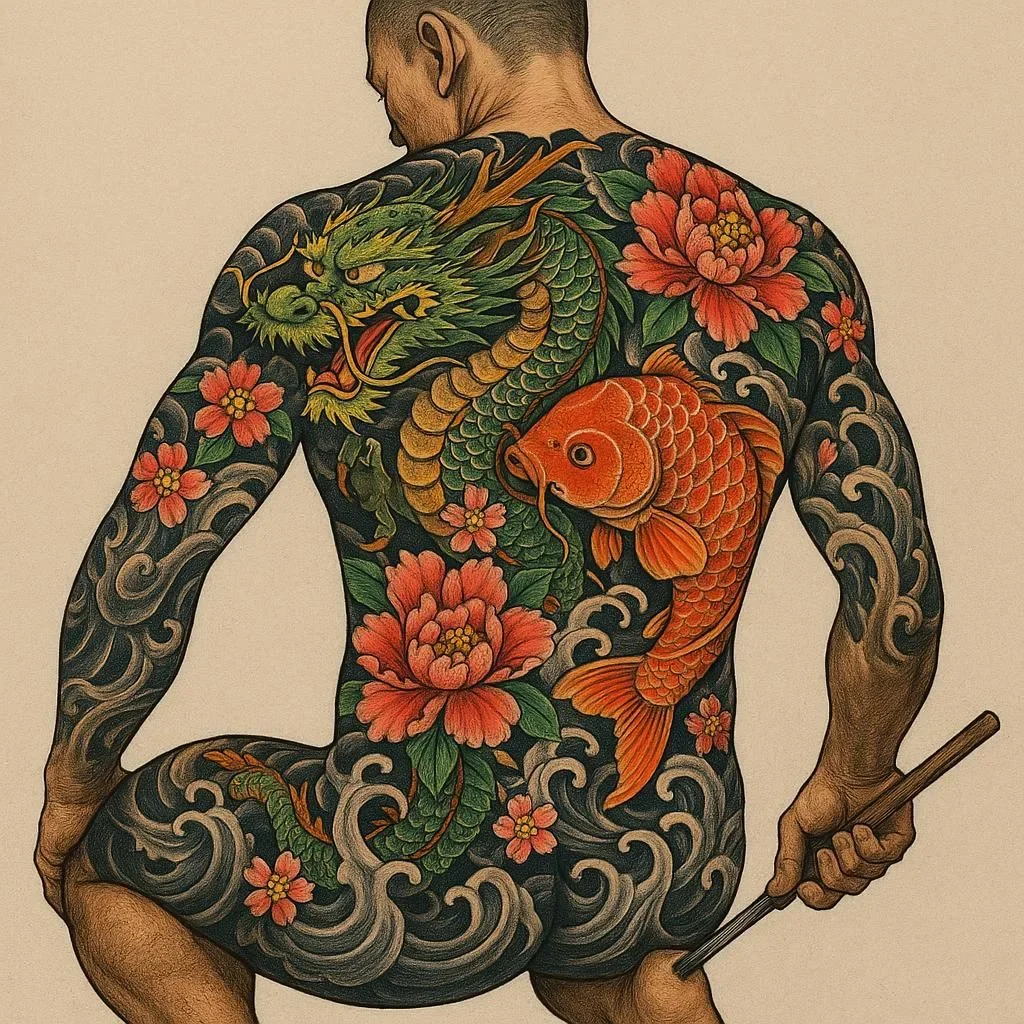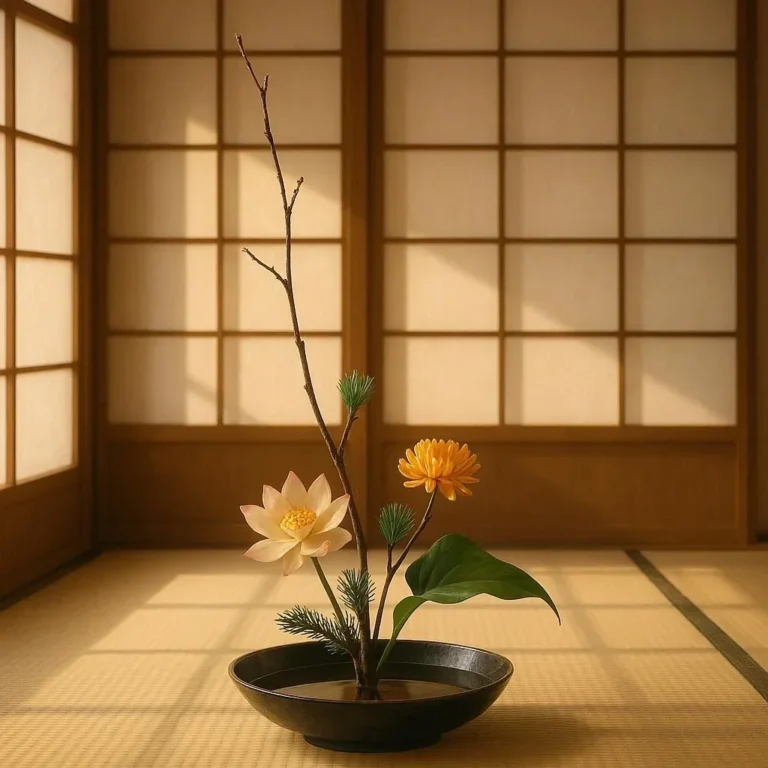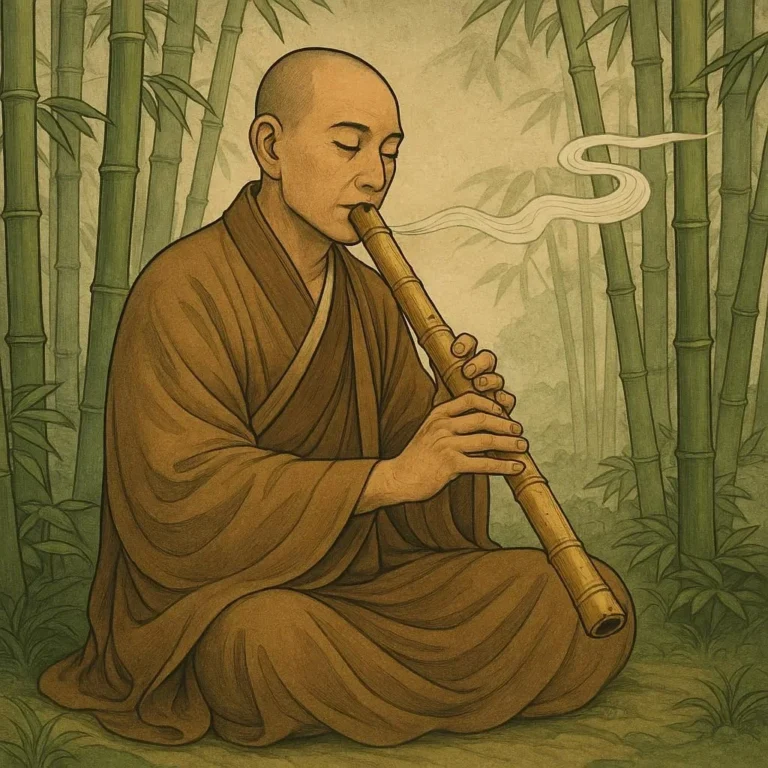504 views The Evolution of Yakuza Tattoos and Symbolism
Yakuza tattoos, also known as Irezumi, hold a profound place in Japanese culture, blending art, history, and symbolism in a way that few other tattoo traditions can match. This blog post delves into the fascinating history of Yakuza tattoos, their cultural significance, and how they have evolved over time.
A Brief History of Yakuza Tattoos
Yakuza tattoos have their roots in Japan’s Edo period (1603-1868), where tattoos were primarily used to mark criminals as outcasts. However, over time, these tattoos evolved into intricate works of art that told stories of the wearer’s history, status, and even their moral code.
Early Beginnings
During the Edo period, tattoos were used as a form of punishment. Criminals were tattooed with symbols that indicated their crimes, such as a black ring on the arm for theft or a cross on the forehead for more serious offenses. These tattoos were meant to shame the individual and make them easily identifiable to society.
The Rise of Irezumi
As time passed, tattoos began to take on a more artistic form. Skilled tattoo artists, known as Horishi, developed the art of Irezumi, a traditional Japanese tattooing technique that involves hand-tapping ink into the skin with needles. This method, still practiced today, allows for intricate designs and vibrant colors.
Yakuza and Tattoos
The Yakuza, Japan’s organized crime syndicates, adopted these tattoos as a way to signify their allegiance, status, and criminal history. Each tattoo was unique, often depicting scenes from Japanese mythology, nature, and folklore. These designs were not only aesthetically pleasing but also carried deep symbolic meanings that reflected the wearer’s life journey.
Cultural Significance of Yakuza Tattoos
Yakuza tattoos are more than just body art; they are a window into the wearer’s soul. Each design is carefully chosen to represent specific values, experiences, and aspirations. Here are some key aspects of their cultural significance:
Symbolism in Yakuza Tattoos
- Dragons: Represent strength, power, and good fortune. Dragons are often depicted in Yakuza tattoos as fierce creatures that protect the wearer from harm.
- Koi Fish: Symbolize perseverance and determination. A koi fish swimming upstream is a common motif, representing the struggle against adversity.
- Cherry Blossoms: Signify the fleeting nature of life. Cherry blossoms, or Sakura, are a reminder to live life to the fullest, as their beauty is short-lived.
- Wave Patterns: Represent the ebbs and flows of life. Waves are often used to symbolize resilience and adaptability.
- Phoenix: Represents rebirth and regeneration. The Phoenix is a powerful symbol of rising from the ashes and overcoming challenges.
The Role of Tattoos in Yakuza Culture
For members of the Yakuza, tattoos serve as a visual record of their life story. Each piece is carefully designed and placed on the body to convey specific messages. For example, a tattoo of a snake coiled around the arm may indicate a period of imprisonment, while a tattoo of a tiger may signify courage and strength.
The Decline of Yakuza Tattoos in Modern Times
As Japan modernized, the perception of tattoos began to change. What was once a symbol of status and honor among the Yakuza became increasingly stigmatized. Today, tattoos are often associated with organized crime and are generally frowned upon in mainstream Japanese society.
The Stigma of Tattoos in Japan
In Japan, tattoos are still heavily stigmatized, and many public places, such as onsen (hot springs) and gyms, still ban tattooed individuals. This stigma has led to a decline in the number of people getting traditional Yakuza tattoos, even among Yakuza members themselves.
The Role of the Yakuza in Modern Japan
The Yakuza’s influence has waned in recent decades, and with it, the tradition of getting elaborate tattoos has also begun to fade. Younger generations are less likely to follow in the footsteps of their predecessors, opting instead for more discreet forms of body art.
The Resurgence of Yakuza Tattoos in Modern Times
Despite the stigma, Yakuza tattoos have experienced a resurgence in popularity in recent years, particularly among tattoo enthusiasts worldwide. This resurgence is largely due to the growing appreciation of Japanese tattoo art and its rich cultural heritage.
The Influence of Yakuza Tattoos on Global Tattoo Culture
Yakuza tattoos have had a profound influence on tattoo culture worldwide. The intricate designs, vibrant colors, and deep symbolism of Irezumi have inspired tattoo artists and enthusiasts globally. Today, it’s not uncommon to see people from all walks of life sporting traditional Japanese-style tattoos, even if they have no connection to the Yakuza.
The Role of Tattoo Artists in Preserving Yakuza Tattoos
Tattoo artists, both in Japan and abroad, have played a crucial role in preserving the art of Yakuza tattoos. Many artists have dedicated their careers to mastering the traditional techniques of Irezumi, ensuring that this ancient art form continues to thrive in the modern world.
The Symbolism of Yakuza Tattoos: A Deeper Dive
The symbolism behind Yakuza tattoos is as complex as the designs themselves. Each element of a Yakuza tattoo carries a specific meaning, often reflecting the wearer’s personality, experiences, and values. Below are some common themes and symbols found in Yakuza tattoos:
Common Themes in Yakuza Tattoos
- Nature: Natural imagery, such as mountains, rivers, and trees, is common in Yakuza tattoos. These elements are often used to symbolize the harmony and balance that exist in nature.
- Mythology: Mythological creatures, such as dragons, phoenixes, and tengu, are frequently depicted in Yakuza tattoos. These creatures are often used to symbolize strength, resilience, and divine power.
- Human Figures: Human figures, particularly samurai and geisha, are also common in Yakuza tattoos. These figures are often used to represent honor, loyalty, and beauty.
- Religious Imagery: Religious imagery, such as Buddha and various deities, is also found in Yakuza tattoos. These images are often used to symbolize spirituality and enlightenment.
The Meaning Behind Specific Symbols
- Peony: Symbolizes good fortune and prosperity. The peony is often used in Yakuza tattoos to represent wealth and success.
- Hannya: A Hannya is a mask that represents jealousy and hatred. In Yakuza tattoos, the Hannya is often used to symbolize the wearer’s struggles with these emotions.
- Knots: Knots are often used in Yakuza tattoos to symbolize bonds and relationships. A pair of intertwined knots may represent friendship or an unbreakable bond between two people.
- Wisteria: Wisteria is often used in Yakuza tattoos to symbolize love and longing. The wisteria flower is also associated with the fleeting nature of life.
The Evolution of Yakuza Tattoos Over Time
Like any art form, Yakuza tattoos have evolved over time, influenced by changing societal norms, technological advancements, and cultural exchange. While traditional Yakuza tattoos are still highly respected, modern variations have emerged that incorporate new techniques and designs.
The Influence of Western Culture on Yakuza Tattoos
The introduction of Western culture to Japan in the late 19th and early 20th centuries had a significant impact on Yakuza tattoos. Many tattoo artists began incorporating Western techniques and designs into their work, leading to the development of a unique fusion style that blended traditional Japanese imagery with Western artistic influences.
The Rise of Tattoo Machines
The invention of the tattoo machine in the late 19th century revolutionized the tattoo industry. While traditional Irezumi artists continued to use hand-tapping techniques, many others began using tattoo machines, which allowed for faster and more consistent results. This shift led to the development of new styles and techniques that further diversified Yakuza tattoos.
The Role of Social Media in Promoting Yakuza Tattoos
Social media has played a significant role in the resurgence of Yakuza tattoos. Platforms like Instagram and Pinterest have provided tattoo artists with a global audience, allowing them to showcase their work and connect with potential clients. This exposure has led to a renewed interest in Yakuza tattoos, particularly among younger generations.
The Difference Between Yakuza Tattoos and Traditional Japanese Tattoos
While Yakuza tattoos are a subset of Japanese tattoos, they have distinct characteristics that set them apart from traditional Japanese tattoos. Here are some key differences:
Yakuza Tattoos
- Purpose: Yakuza tattoos are primarily used to signify the wearer’s allegiance to a specific Yakuza organization, as well as their status within that organization.
- Design: Yakuza tattoos are typically more elaborate and detailed, often covering large areas of the body.
- Symbolism: Yakuza tattoos often incorporate symbols and imagery that are specific to the Yakuza lifestyle, such as dragons, waves, and certain mythological creatures.
- Placement: Yakuza tattoos are often placed on the back, arms, and legs, with the most intricate designs reserved for the back.
Traditional Japanese Tattoos
- Purpose: Traditional Japanese tattoos are primarily used for decorative purposes, although they may also carry symbolic meanings.
- Design: Traditional Japanese tattoos are often simpler in design, with less emphasis on intricate details.
- Symbolism: Traditional Japanese tattoos often incorporate natural imagery, such as cherry blossoms and mountains, and may include mythological creatures like dragons and phoenixes.
- Placement: Traditional Japanese tattoos can be placed on any part of the body, although they are often reserved for the arms, legs, and back.
The Future of Yakuza Tattoos
As society continues to evolve, so too will the art of Yakuza tattoos. While the traditional techniques and designs will likely remain an important part of Japanese culture, modern influences will undoubtedly shape the future of Yakuza tattoos.
The Role of Younger Generations
Younger generations are playing an increasingly important role in shaping the future of Yakuza tattoos. Many young tattoo artists are experimenting with new techniques and designs, while still paying homage to the traditional methods that have been passed down through generations.
The Global Appeal of Yakuza Tattoos
The global appeal of Yakuza tattoos shows no signs of waning. As more people become exposed to Japanese tattoo art, the demand for Yakuza-style tattoos continues to grow. This increasing popularity ensures that Yakuza tattoos will remain a relevant and important part of global tattoo culture for years to come.
The Preservation of Traditional Techniques
As modern tattooing techniques continue to evolve, it’s important that traditional methods are preserved. Many tattoo artists and enthusiasts are working to ensure that the art of Irezumi is not lost, but rather passed down to future generations.
FAQs: Frequently Asked Questions About Yakuza Tattoos
1. Are Yakuza Tattoos Still Common in Japan?
While Yakuza tattoos are still present in Japan, they are becoming less common, especially among younger generations. The stigma associated with tattoos in Japanese society has led many people to avoid getting them, even if they have no connection to organized crime.
2. Can Non-Yakuza Members Get Yakuza-Style Tattoos?
Yes, non-Yakuza members can get Yakuza-style tattoos. However, it’s important to approach this with respect and understanding of the cultural significance behind these designs. It’s always a good idea to research the meaning of any tattoo before getting it, especially if it has cultural or historical importance.
3. What Is the Significance of Yakuza Tattoos in Modern Times?
In modern times, Yakuza tattoos are primarily seen as a form of artistic expression and cultural preservation. While they still hold significance within the Yakuza lifestyle, they are also appreciated by tattoo enthusiasts worldwide for their beauty and historical importance.
4. Are Yakuza Tattoos Considered Offensive in Japan?
Yakuza tattoos are still generally stigmatized in Japan, and many people associate them with organized crime. However, attitudes are slowly changing, especially among younger generations, as the art form gains more international recognition and appreciation.
5. How Can I Learn More About Yakuza Tattoos?
There are many resources available for those interested in learning more about Yakuza tattoos. Books, documentaries, and online articles provide valuable insights into the history and cultural significance of these tattoos. Additionally, visiting reputable tattoo shops and speaking with experienced tattoo artists can provide firsthand knowledge and guidance.
Conclusion
The evolution of Yakuza tattoos is a testament to the resilience and adaptability of Japanese culture. From their humble beginnings as a form of punishment to their current status as a celebrated art form, Yakuza tattoos continue to captivate people around the world. Whether you’re a tattoo enthusiast, a history buff, or simply someone interested in Japanese culture, Yakuza tattoos offer a wealth of knowledge and inspiration.
Call-to-Action
If you found this article informative and engaging, we encourage you to share it with others who might be interested in the fascinating world of Yakuza tattoos. Additionally, if you have any questions or personal experiences related to Yakuza tattoos, we’d love to hear from you in the comments below.
For further reading on Japanese tattoo culture, we recommend visiting Wikipedia’s comprehensive guide on Japanese tattoos and exploring the work of renowned tattoo artists like Horiyoshi III.





